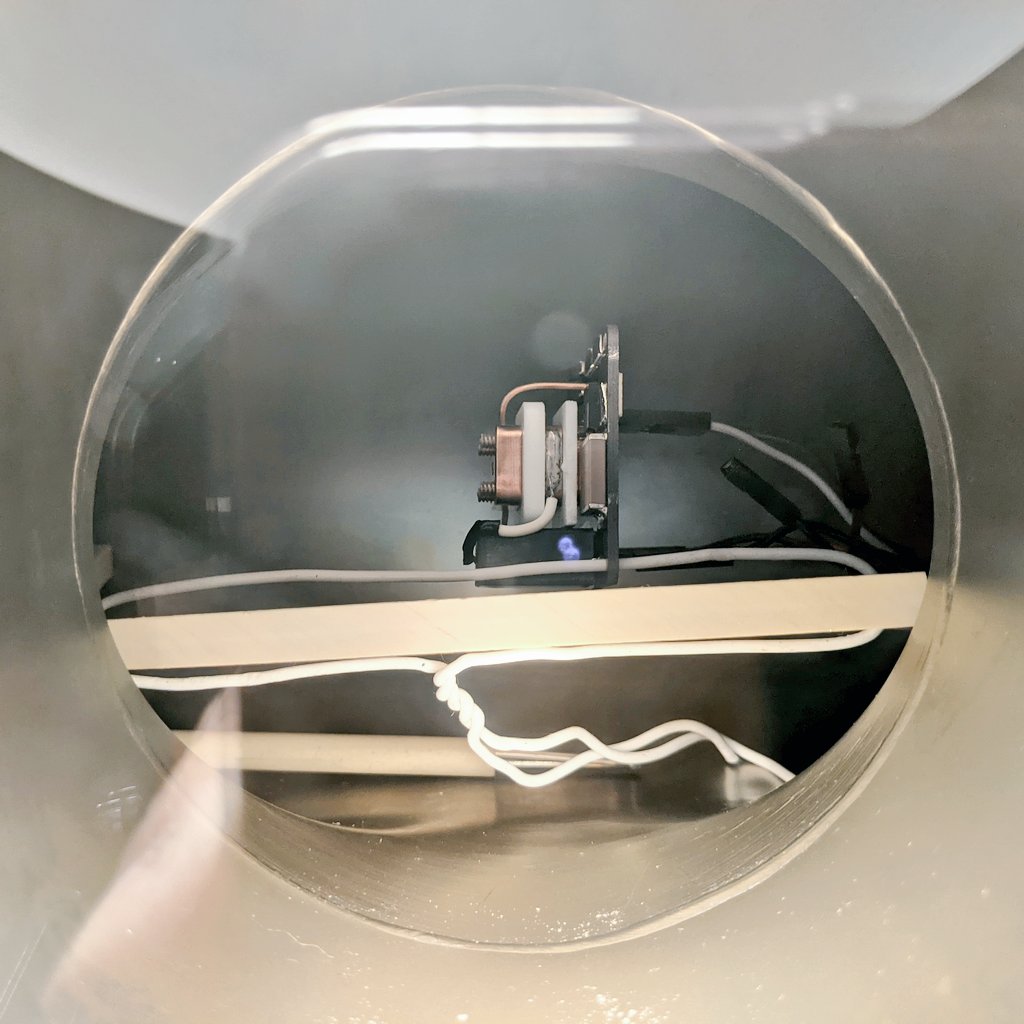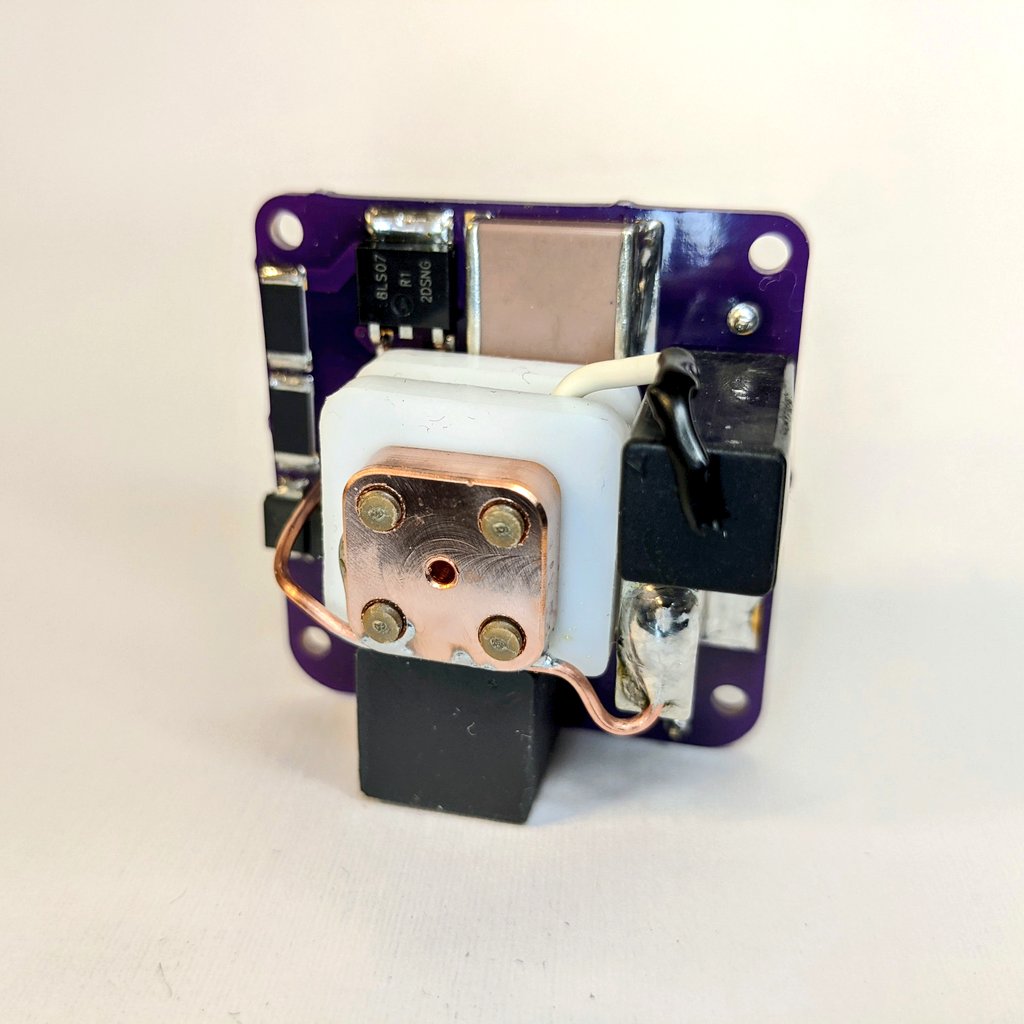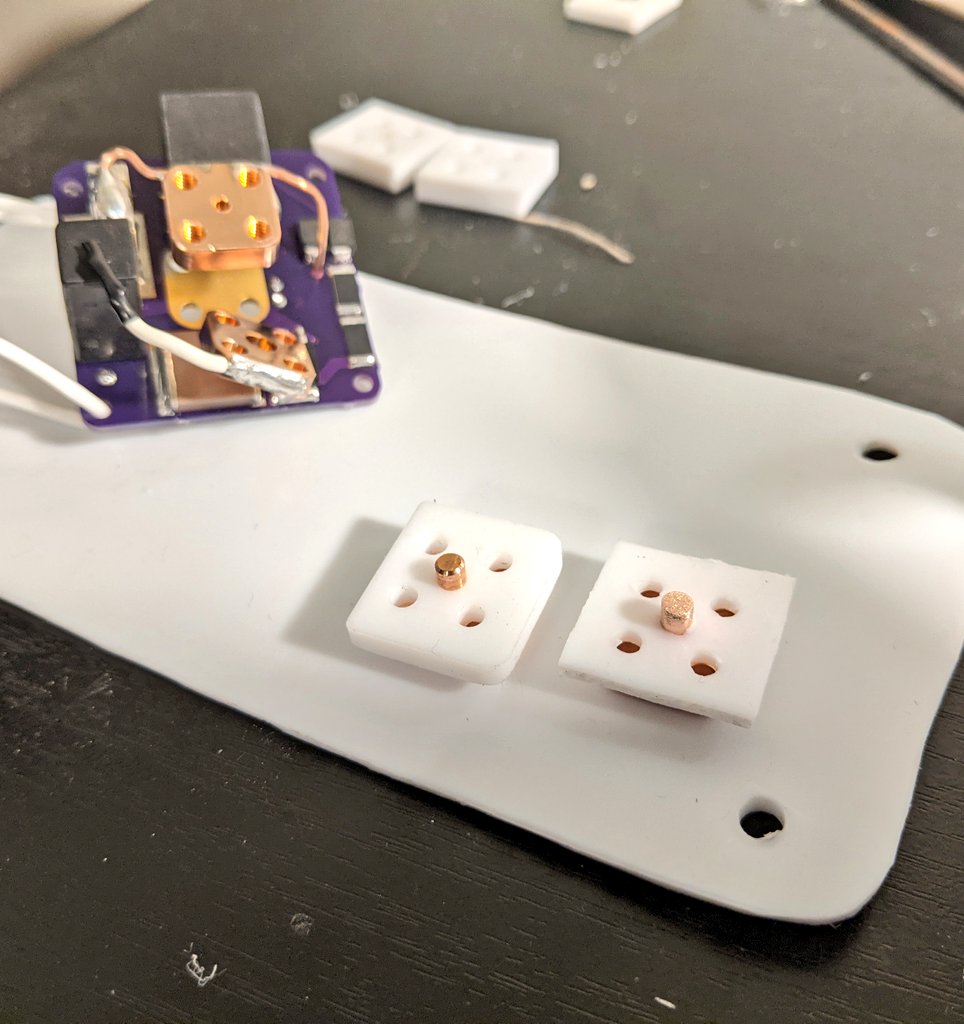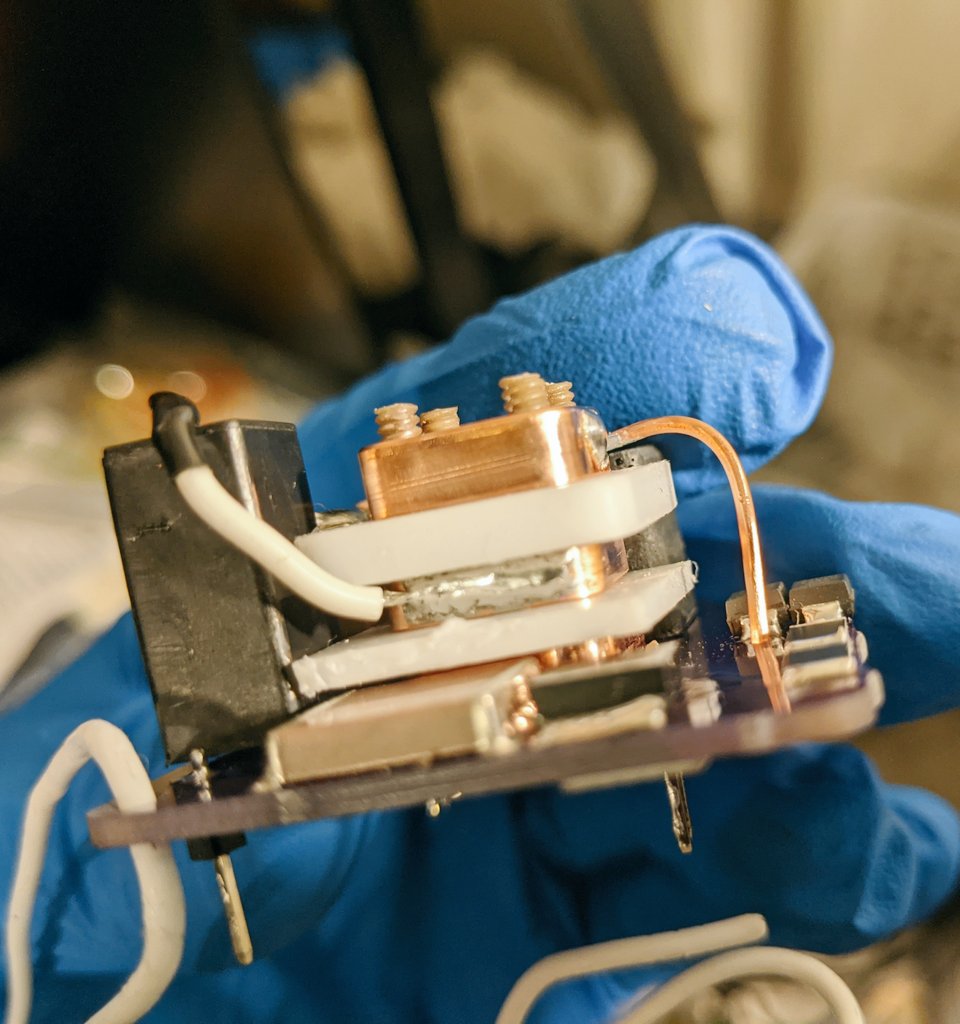After the recent lifetime test of the rebuilt AIS-gPPT3-1C Micro Pulsed Plasma Thruster, I was commissioned to deliver a brand new gPPT3 system for testing and possible integration aboard another nanosat.
Since lifetime of the thruster is limited to about 1000-1300 shots, it was decided to run qualification testing on the inputs, outputs, and reliable firing for 10 shots. the first attempt had significant difficulty starting, all I/O was nominal, but a reliability of only around 30%.
Reviewing the machined parts for the thruster, it was decided to bring the cathode pin closer to the surface of the Teflon fuel bore by replacing the original 1/8″ Teflon insulator plate with a 1/16″ thick plate. The surface of the cathode pin was also roughed up with 60 grit sandpaper to increase the probability of breakdown with a much rougher surface.
The thruster was loaded into the chamber again for a second test. All system I/O were nominal, however no output pulse was observed. The thruster was disassembled, discovering the cathode pin was too close to the Teflon fuel bore, pressing up into it and blocking the bore, preventing ignition from occurring. The cathode pin height was adjusted, and both the pin and igniter surfaces were roughed with sandpaper. The thruster was loaded up again for a third run.

After adjusting the input voltage up from 3.3V to 3.8V, the thruster started firing reliably, and I was finally able to finish qualification of the new thruster build with the recorded 10 shots in a row. The qualification test was livestreamed (like the other two prior), which can be viewed on the AIS Twitter feed or below. The 10 shot sequence can be seen starting at 3:53 in the video. At 3.8V at a rep rate of 0.25Hz 10 ignitions in a row were achieved without misfire at a main discharge of 1500V and 0.15J per shot.
With the qualification of this new thruster, I will be able to ship it out, as the third official AIS thruster to be sent out for integration. Along with this, I will be updating the original design files reflecting these new modifications.




